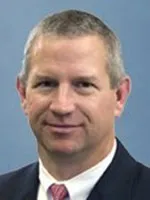Safety Practices, Culture Help Carriers Reduce Liability

[Stay on top of transportation news: Get TTNews in your inbox.]
PHOENIX — When a crash happens, it is a carrier’s policies, procedures and routines that could lead to a nuclear verdict.
“It isn’t the accident that is causing the nuclear verdicts. It is the systemic failures — the things you do day in and day out,” said Doug Marcello, an attorney with Saxton and Stump and chief legal officer of Bluewire.
Marcello was one of several speakers who addressed liability and lawsuits during American Trucking Associations’ Safety, Security and Human Resources National Conference and Exhibition.
Nuclear verdicts are on the rise, and they’ve become an attractive investment for third parties that are financing lawsuits in exchange for a share of the profits. Andrew Boyle, co-president of Boyle Transportation and chairman of American Trucking Associations, said litigation finance has grown 745% since 2015.

Litigation finance has skyrockted 745% since 2015, according to American Trucking Associations Chairman Andrew Boyle. (American Trucking Associations)
“You’re going to sue truckers. I’m going to finance it,” he said of investors.
Many carriers fear change regarding liability and safety practices, but that can be detrimental.
“We are locked into doing things the way we’ve always done them, and that becomes the dogma for the billboard lawyer companies to take advantage of,” Marcello said.
Carriers often say safety is their No. 1 priority, but there can be a disconnect between the slogan and day-to-day operations.
“You cannot slogan your way to safety. Slogans aren’t a defense,” Marcello said. “If you do slogans without having a safety culture you live by day-by-day, you’re setting yourself up.”

Moseley
To help cultivate a safety culture, Rob Moseley, founding partner of Moseley Marcinak Law Group, recommends carriers closely monitor their Safety Measurement System data and stay current on how it is trending. Safety data is full of predictors, including out-of-service and driver violations, that can help them focus their safety efforts. Carriers also have to follow through on any improvement plans.
In a lawsuit, plaintiffs can query the Department of Transportation and get access to carriers’ communications with the agency.
“They’ll get that FOIA and see that letter signed by your safety director noting the things you’re going to do better, then they’ll look to see if you did better,” Moseley said.
Kicking off #SSHR24 in sunny Phoenix! From insightful sessions with Andrew Boyle & Mike Lutzenkirchen, to gearing up for an exciting exhibit hall opening - we're all set to drive conversations around trucking safety, security, and human resources. Stay tuned for more! pic.twitter.com/nWTNsPdAx1 — American Trucking (@TRUCKINGdotORG) April 25, 2024
Carriers should monitor soft hours that weren’t accounted for in the electronic logging device, such as personal conveyance and unassigned time.
“The easy answer to that is they’re yard moves,” Marcello said.
However, plaintiffs make it look like carriers and drivers are manipulating hours and hiding time.
“What they’re looking at with these hours is a systemic failure they can parlay into a nuclear verdict,” Marcello said.
If a crash occurs, the immediate response is critical, and it starts with the person who takes the initial call. There should be a specific position or group of people on call to do it at all times, and they need to be trained on what to ask and how they document it.
“When the call comes in for the accident, it is going to be taken as the grail for that accident. They will say that is what was said before safety and lawyers got involved,” Marcello said.
Details should be limited to exactly what is needed, such as the location, the driver’s name, injuries and if there is hazmat.
Check out Transport Topics' updated Top 100 list of the largest logistics companies in North America, and explore how the industry's top players have adapted to a tough freight market and are preparing for the future. Tune in above or by going to RoadSigns.ttnews.com.
“There is a checklist I have for the dispatcher to go through,” Marcello said, adding that there is no reason to ask drivers how fast they were going. “The telematics we have will tell us all the information.”
Traditionally, carriers have taken a written or recorded statement from drivers, but Marcello advised them not to. Why? It is “giving the plaintiff admission on a platter,” he said. “We want to avoid them writing or recording a statement.”
Instead, the carrier’s attorney can obtain a statement with attorney-client privilege. Marcello said drivers can even use their Fifth Amendment rights to avoid making a statement to police.
Many carriers traditionally have given drivers a drug or alcohol test after a crash, but Marcello disagrees with the practice.
“Many times, we need to prove our driver isn’t under the influence,” he said. “You have a trained professional who is going to do that for you — the state trooper.”
When there is minimal damage and no injuries, carriers may decide no action is necessary, but Marcello said every incident requires a requisite level of response.
“If we don’t do the proper response,” he said, “we find ourselves in the courtroom trying to play catch-up.”
Carriers also put themselves at risk by waiting for the potential plaintiff to act, which Marcello called the dark period.
“We have to attack the dark period,” he said, adding that he recommends immediate outreach to the plaintiffs, requesting information about medical appointments and to submit to an immediate medical exam.
Want more news? Listen to today's daily briefing above or go here for more info
An unconventional approach Marcello has used after a crash is for the carrier to sue first.
“In many places, where the suit is filed is the jurisdiction,” he explained. “Through Supreme Court decisions, they can sue a trucking company wherever they do business. If it is a conservative jurisdiction, we’ll file there first.”
Onboard video cameras can shut down claims quickly and help carriers avoid litigation.
“We had an accident recently where the other driver drove into our truck. It took less than 24 hours, and a billboard attorney called,” said Mike Lasko, vice president of environment, health and safety for Skelton Truck Lines and Boyle Transportation. “We had all the video and were able to defeat those claims before we got in court.”
If there is an incident, Lasko tries to get the video to the officer before he or she has left the scene.
“The benefit of getting it early is you can put a cap on your exposure,” he said.
Video can come from other places as well, such as a Ring doorbell or even a passing vehicle’s dashcam, Marcello said.
Brokers are increasingly finding themselves part of a lawsuit for allegedly hiring a motor carrier they shouldn’t have, Moseley said. There can be signs of an issue, particularly with a double-broker situation, such as several carriers using the same address.
After a crash, Marcello said carriers need to distinguish between privileged information and discoverable information. Discoverable information should go to the safety department for analysis, but that analysis should only be done after the investigation and, in some cases, after litigation.
Marcello said taking proactive steps in day-to-day operations and as soon as an incident occurs can help carriers protect their drivers and the future of the business.
“The folks on the billboard aren’t sitting back and playing nice,” he said. “We’re not playing dirty. We’re playing hard.”





